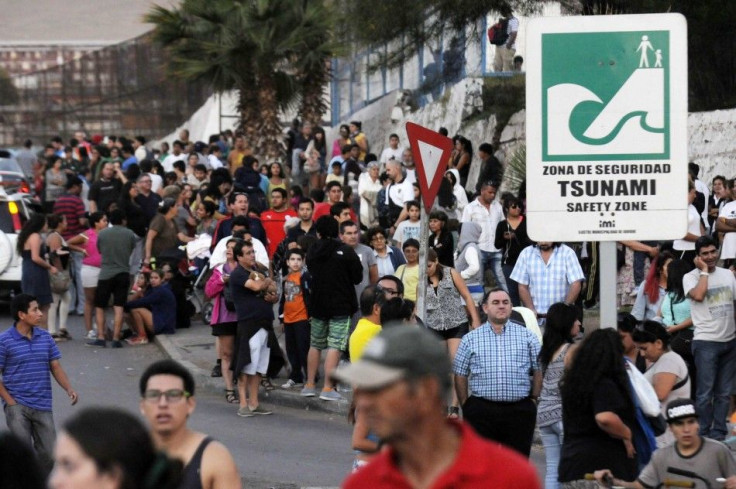Magnitude 6.7 Earthquake Hits Pacific Coast of Chile; What to Do Before, During And After a Disaster

A magnitude 6.7 earthquake, initially reported as magnitude 7.0, hits Pacific Coast of northern Chile in the evening of March 16 that prompted evacuation of people near the coastal area.
No immediate reports on damages or injuries were available, according to various reports. The country's copper mines had also not been affected.
Operations in northern Chile's considerable mines Collahuasi, a partnership between Glencore Xstrata and Anglo American, were normal, Reuters reported.
According to Federal Emergency Management Agency (FEMA), a severe earthquake is one of the "most frightening and destructive phenomena of nature." So here is an excerpt on what to do before, during and after a disaster.
Before
Build an emergency kit and make family communications plan.
During
If indoors, drop to the ground; take cover by getting under a sturdy table or other pieces of furniture. Hold on until the shaking subsides. If outdoors, stay there but be sure to move away from buildings, streetlights and utility wires. If in a moving vehicle, stop as quickly as safety permits and stay in the vehicle. If trapped under debris, do not move about or kick up dust, and tap on a pipe or wall so rescuers can locate you.
After
Look around to ensure that it is safe to move. Expect aftershocks and help injured or trapped persons. Go to the designated public shelter if your home had been damaged and is no longer safe. For the complete disaster precautions, go to fema.gov.
According to U.S. Geological Survey (USGS), several magnitude 8 or stronger earthquakes have occurred in South America since 1990, including the 1960 magnitude 9.5 in southern Chile, which was the "largest instrumentally recorded earthquake in the world."
The strong earthquake's epicenter, according to the USGS, was 37 miles (60 kilometers) west-northwest of Iquique, Chile, that hit a depth of 12.4 miles (20 kilometers).
The Pacific Tsunami Warning Center said sea level readings indicated that a tsunami was generated and might have been destructive along coasts within 200 kilometers of the earthquake epicenter.
No tsunami threat exists. But among the other coastal areas in the Pacific although, minor tsunamis can last to several hours and this may still be experienced.
WATCH: Magnitude 6.3 earthquake hits Iran in 2013





















